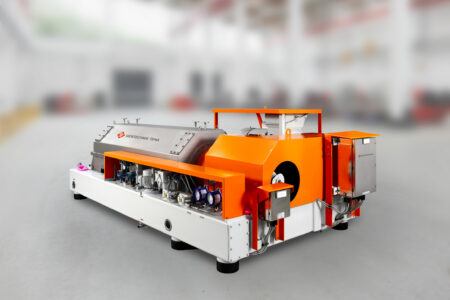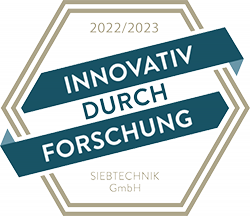Screen scroll centrifuge CONTURBEX
The CONTURBEX is a continuously operating, filtering centrifuge with a very wide range of applications.
Boric acid has the chemical formula H₃BO₃ and occurs as colorless crystals or as a white powder that dissolves in water. In mineral form, it is known as sassolite.
Boric acid, also known as sassolite, is found in free form mainly in some volcanic areas, such as the Tuscany region of Italy. There, it emerges from fissures in the earth mixed with water vapor.
It is also a component of many naturally occurring minerals such as borax, boracite, ulexite, and colemanite.
Boric acid and its salts are found in seawater. It is also found in plants, including almost all fruits.
Boric acid is used to treat or prevent boron deficiency in plants. It is also used to preserve grains such as rice and wheat. In the food industry, boric acid is used as a preservative under the name E 284.
Boric acid has antiseptic, antibacterial and fungicidal properties. It is used in a highly diluted solution as an eyewash.
The most important industrial application of boric acid is the manufacture of monofilament glass fibers, commonly known as textile glass. Fiberglass is used to reinforce plastics in applications ranging from boats to industrial piping to computer circuit boards. In the construction industry, boric acid and borax and other borates (boron salts) are used in wood preservatives, stains, and flame retardants, as well as in organic insulation materials to prevent mold and pest infestation.
Boric acid is one of the most commonly used substances to counteract the harmful effects of reactive hydrofluoric acid (HF) after accidental skin contact.
Boric acid is used in the production of laurolactam, which is an intermediate (monomer) used in the production of polyamide 12 (nylon 12).


Over 2,000,000 tons of boric acid are produced worldwide each year. It can be produced in several ways. The most commonly used process is the reaction of borax with sulfuric acid. The starting materials react in a reactor at temperatures of about 90 to 95 °C to form boric acid. The resulting solution is filtered.
The solution is then cooled to 15°C and crystallized in a crystallizer. A centrifuge separates the crystalline boric acid from the mother solution, which is returned to the process. The boric acid is then dried and removed for storage.
Boric acid is also a by-product of the production of laurolactam. Laurolactam is an intermediate in the production of polyamide 12 (nylon 12).

Crystal size and particle size distribution are important factors in selecting the right centrifuge for processing boric acid. Boric acid typically has a crystal size of d50 > 200 μm. This makes our CONTURBEX screen scroll centrifuge the ideal machine for this application. If the crystal size is < 150 μm, a decanter with the appropriate particle size distribution can also be used.
SIEBTECHNIK TEMA centrifuges are specially optimized for the respective separation task. When selecting materials, austenitic and ferritic stainless steels have proven themselves in centrifuge construction for applications subject to normal stresses.
For processes in which abrasive materials are processed, the centrifuges must be provided with effective wear protection. Starting with hard coal processing, we have been continuously developing wear protection systems since 1922.
Our centrifuges can be equipped with highly developed wear protection systems made of e.g. tungsten carbide, Stellite® or ceramic tiles, to name but a few. Rubber coatings or matrix coatings have also proven themselves in various applications.
If required, our engineers develop new and efficient solutions in coating, bonding and joining technology for our customers worldwide.
Centrifuge components must not only withstand high forces, but also process-related stresses such as corrosion, wear and high temperatures. Cost and availability of materials also play an important role. Our customers select the necessary product-contacting materials according to these very specific requirements.
Duplex and high-alloy stainless steels, Hastelloy® and titanium materials for a wide variety of processes and stresses are part of our daily business in centrifuge construction. Our quality management has developed very detailed and cost effective processes for design, manufacturing processes and component testing based on European guidelines.
Typical sheet metal and forging materials for centrifuge wetted components include

The CONTURBEX is a continuously operating, filtering centrifuge with a very wide range of applications.

Our decanters are individual, functional and versatile. They offer highly efficient separation of even the finest solids with almost complete clarification of the liquid phase.

Find the right contact for your region.
We have the right solution for every task. And if not, we’ll work with you to find one. Get in touch with us!
Our specialists will be happy to advise you individually on site or remotely, and are available to answer any questions you may have. Send us a message using our
